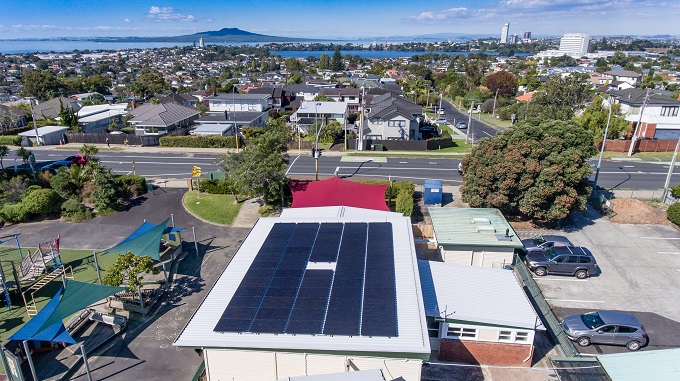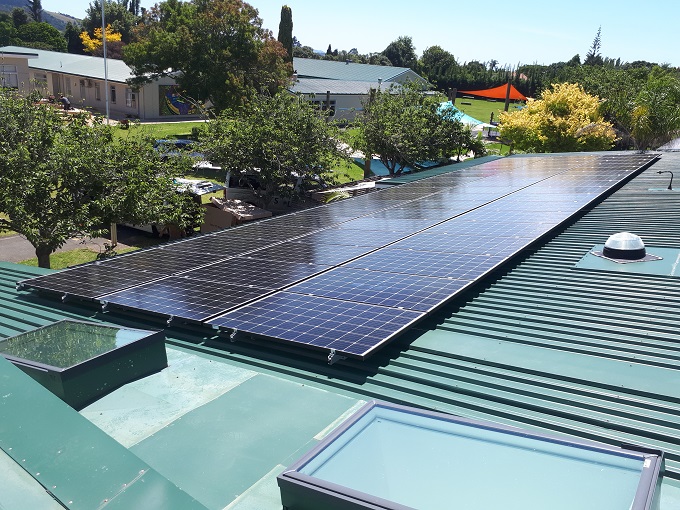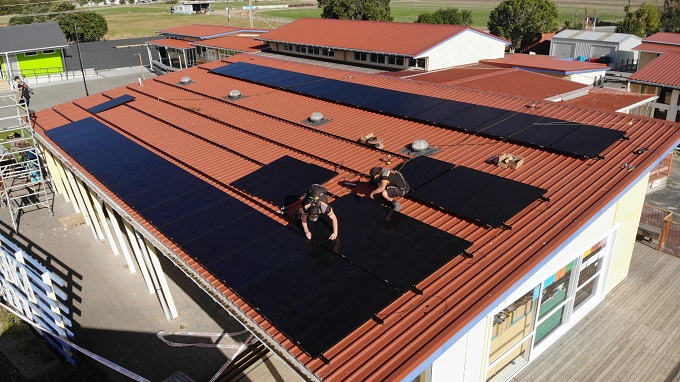
With no funding cuts in the education sector, it’s also one way we can help keep the economy afloat during a trying time for all.
Caveat at this stage: It is unclear how long schools will be shut down for or how long the lockdown will be in effect, beyond these scheduled four weeks.
This article was originally written for our Term 1 magazine and we are sharing it here. Find the whole mag online via Issuu.
Once, not so long ago, switching to solar power was all about cutting costs and embracing clean energy.
Now, schools with solar panels are plugging into the educational benefits of the STEM-based activities presented by that technology.
But more significantly, it’s become clear that the emotional wellbeing of schoolchildren is linked to environmental concerns and a lack of faith in the ability of current leaders to protect the planet.

Eco-anxiety is prevalent: a recent US poll found negative news stories about the environment affected the emotional wellbeing of 72 percent of millennials, and the American Psychological Association reports millennials feel stressed and powerless about the state of the planet and the challenges of saving it.
Indigenous, farming and low-income communities are most at risk of suffering mental health issues as a result of climate change fears, the APA says. The loss of homes as a result of climate change threatens tradition, cultural practices and identity for indigenous children.
Every school in New Zealand will this year be given access to materials about the climate crisis written by the country’s leading science agencies – including tools for students to plan their own activism and to process their feelings of anxiety over environmental issues.
The non-compulsory government scheme, which will be offered to all schools with students aged 11 to 15, comes in direct response to New Zealand teacher concerns about students’ emotional welfare.
“One of the pieces of feedback we’ve got from teachers around the country is that they’re really crying out for something like this, because kids are already in the conversation about climate change,” said climate change minister James Shaw.
“They’re seeing stuff on social media on a daily basis and none of it’s good news, and the sense of powerlessness that comes from that is extremely distressing.”
Solar power is a practical way schools can demonstrate to students, regardless of their cultural or economic background, that they share a commitment to environmental sustainability.
It’s a very public demonstration that a school understands student fears about the climate and that its vision for a brighter future is aligned with students’ own.
New Zealand has a strong record on generating electricity through renewable sources, but it still relies on the combustion of coal, oil, and gas for around a quarter of the nation’s electricity supply.

Embracing solar energy generation is a commitment to kaitiaki. Solar reduces reliance on polluting fossil fuels and emits nothing, harnessing a resource which is clean, abundant and free. And it requires no water for power generation, unlike traditional electricity production.
Costs
While solar panels require a substantial investment, there are financial plans and grants that help lessen the pain of the outlay.
As part of a planned transition to 100 percent renewable energy in NZ by 2035, the government announced in November a $16 million package to help fund energy efficiencies, including solar installations.
“As of today, schools will be able to apply to a $5 million contestable fund for sustainability initiatives that reduce their environmental impact,” said education minister Chris Hipkins at the time.
“This funding will support innovative energy projects in schools, for example installing solar panels, replacing inefficient heating systems and removing coal boilers to help speed up change.”
Sponsorship through individual local authorities and businesses is also worth looking into. Hutt City Council’s Solar in Schools is an example of a local grants project made available to low decile primary schools. The benefit of fundraising for a solar installation at your school is that the system will provide immediate financial return on your investment, delivering savings that can be poured into other areas.
Of course, even with subsidies most schools can’t afford the upfront cost of installing enough solar panels to power an entire campus.
A number of solar suppliers offer a ‘rent to buy’-style Power Purchase Agreement, through which schools initially pay for the electricity they generate (at a rate lower than through the grid) and after a contracted period of time they assume ownership of the system. Maintenance and repairs are the responsibility of the system owner. A PPA generally means low or zero upfront costs, but higher operational costs for a school than if it bought the system upfront. Suppliers say their finance offers allow schools to install a Solar PV system and pay for it out of the energy savings the system generates in a win-win scenario.
For those preferring to own their system outright, one leading school solar supplier advises: “If a school is not financially able to purchase a large solar array in first instance, they can easily start small and add more solar panels over time. There is a solar solution available for every and any school in New Zealand.”
Once a solar power installation has been financed, the savings for schools can equate to thousands of dollars per year and the system may even generate income through power fed back into the grid.
Education
The data generated from a school’s system can be an invaluable aid to STEM education.
“It takes this abstract idea of renewables as something that can reduce greenhouse gas emissions and brings it home,” says Gabrielle Wong-Parodi, an earth system science expert at Stanford University’s Woods Institute.
Schools can track and monitor their solar data online and access a range of solar-related teacher resources which are curriculum aligned and provide a real-world application for maths and science.
Some use data from their on-site solar energy systems to help students tackle fractions, for example, or see how shifting panel angles can affect power production and how weather and season influence the performance of the photovoltaic cells.
There are other positive spin-offs which are not directly curriculum-connected, too.
A focus on renewable energy creation can create greater awareness of energy use among students and help them to come up with energy-saving initiatives of their own.
It taps into a broader understanding of sustainability and connects with industry-led initiatives such Tourism New Zealand’s Tiaki Promise. And it sparks ideas about other ‘green’ ideas such as school veggie gardens and recycling improvements.
Systems
Recent advances in solar cell efficiency and the tumbling cost of systems – the average solar installation costs less than a quarter of what it did a decade ago – are putting more powerful systems within the financial reach of schools across New Zealand.
Schools are ideally suited to solar energy because their usage is highest during school hours when the sun is shining most powerfully. They also make excellent candidates for solar conversion because they tend to offer large-roofed buildings spread out over a wide geographic area.
Most schools go for an installation of between five and 20kW depending on their size and budget, opting for something that helps meet their energy needs to varying degrees rather fulfilling them completely.
There are a number of practical considerations that need to be taken into account, such as whether the building designated for panel mounting is permanent, whether it has a north facing, unshaded roof space, and whether there is safe access to the panels for cleaning and maintenance.
Electricity retailers can provide the school’s energy consumption figure for the previous year to help determine the requirements of the system, and it is then up to the school to decide the extent of its power generation – and whether it wants to build its solar capacity over time or invest wholesale.
Batteries for energy storage are a relatively new concept in the school space and an expensive addition, but they are a valuable resource and should be considered (even for future installation as prices inevitably drop).








